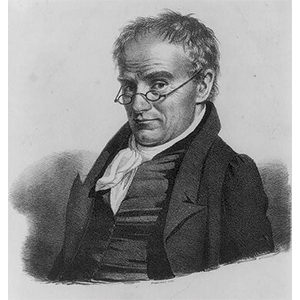 Anthony Philip Heinrich (March 11, 1781 – May 3, 1861)
Anthony Philip Heinrich (March 11, 1781 – May 3, 1861)
Few 19th Century composers built such musical bridges between Europe and the United States as Anthony Philip Heinrich. Born in Bohemia (the modern day Czech Republic) in 1781 he enjoyed a comfortable upbringing and early adulthood, having inherited several businesses fro
m an uncle. Unfortunately the Napoleonic Wars and the ensuing financial crash in Austria caused Heinrich to lose almost all of his fortune.
His formal immigration to America took place in 1816, although unlike most newcomers he was not to live permanently in the USA, instead spending much of his career moving regularly between the two continents. This time shared between Europe and the New World is reflected in his artistic style: that of a unique composer who maintained a European orchestral ‘sound’, whilst concurrently adopting many of the new ideas which were soon to give America its own musical identity.
Musical Style and Influences
Contents
Heinrich’s “crossover” musicianship was immediately on display. He became one of the very first people to conduct a major work by Beethoven in America when, in 1817 in Lexington, Kentucky, he led a “full band” performance of the C major (first) symphony. However, he quickly took to composing. Here he began to merge the classical influences of Haydn and Beethoven with the inspiration of his new surroundings. During a retreat to the wilderness in 1818 he was overwhelmed by its geography, folklore and rural culture.
His music from hereon would encompass a great sense of freedom: seemingly improvisatory and rhapsodic rather than chained to the structures of classicism. His harmony too adopted some of the American chordal structures which were popular at the time, and he freely and proudly quoted a number of patriotic melodies of the day. Even his titles breathed serenity, with works such as “The Dawning of Music in Kentucky” and “The Pleasures of Harmony in the Solitudes of Nature”.
What was Anthony Philip Heinrich Known For?
The Music of Anthony Philip Heinrich
The composer is known for having famously undertaken a “700-mile journey” in order to further his experiences of the American frontier. This was actually two separate adventures: a 300-mile trek through the wilderness from Philadelphia to Pittsburgh, and a 400-mile Ohio River journey.
However, Heinrich is also remembered for having maintained his ties with Europe. He frequently travelled back to give concert tours and, on two separate occasions, even moved briefly to London to play violin in the city’s bustling theater district. In 1842 he chaired the founding meeting of the New York Philharmonic Society, and it was in this city that the “Beethoven of America” died in 1861.
Anthony Philip Heinrich Most Famous Works
His large musical output includes 36 orchestral works, around 100 pieces for solo piano, 40 choral works and approximately 150 songs. “The Minstrel’s March or The Road to Kentucky” (for solo piano) remains popular today, as does his delightful orchestral work “Manitou Mysteries”. Another suite for orchestra is the fabulously-titled “The Ornithological Combat of Kings, or the Condor of the Andes”.
Many of these have been transcribed for different, modern instruments today. For example, many music conservatories teach guitar arrangements of his solo piano pieces.
